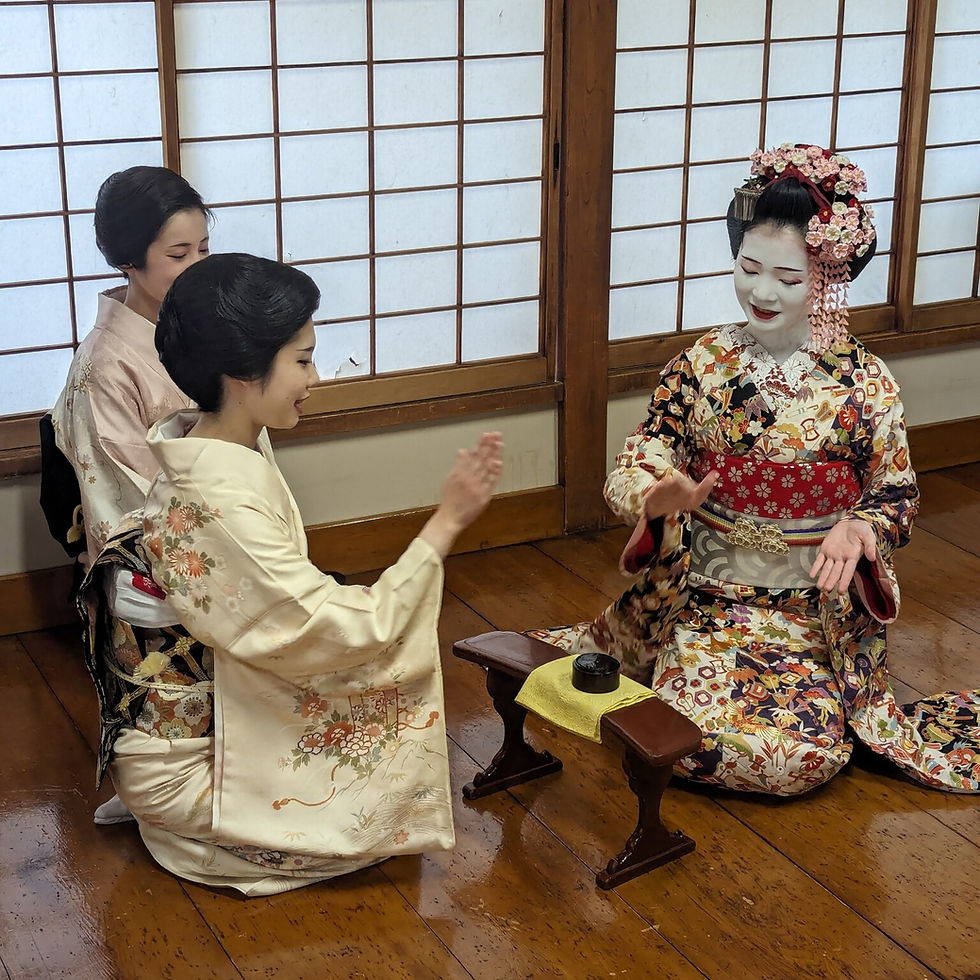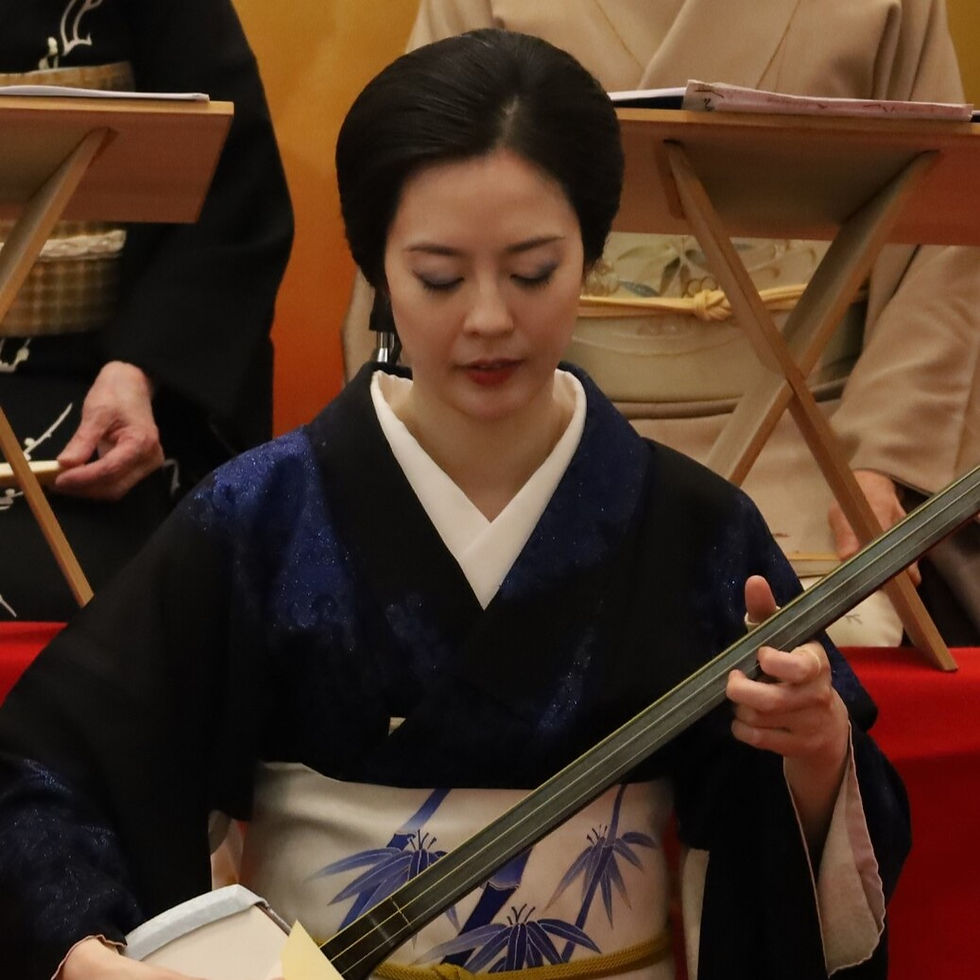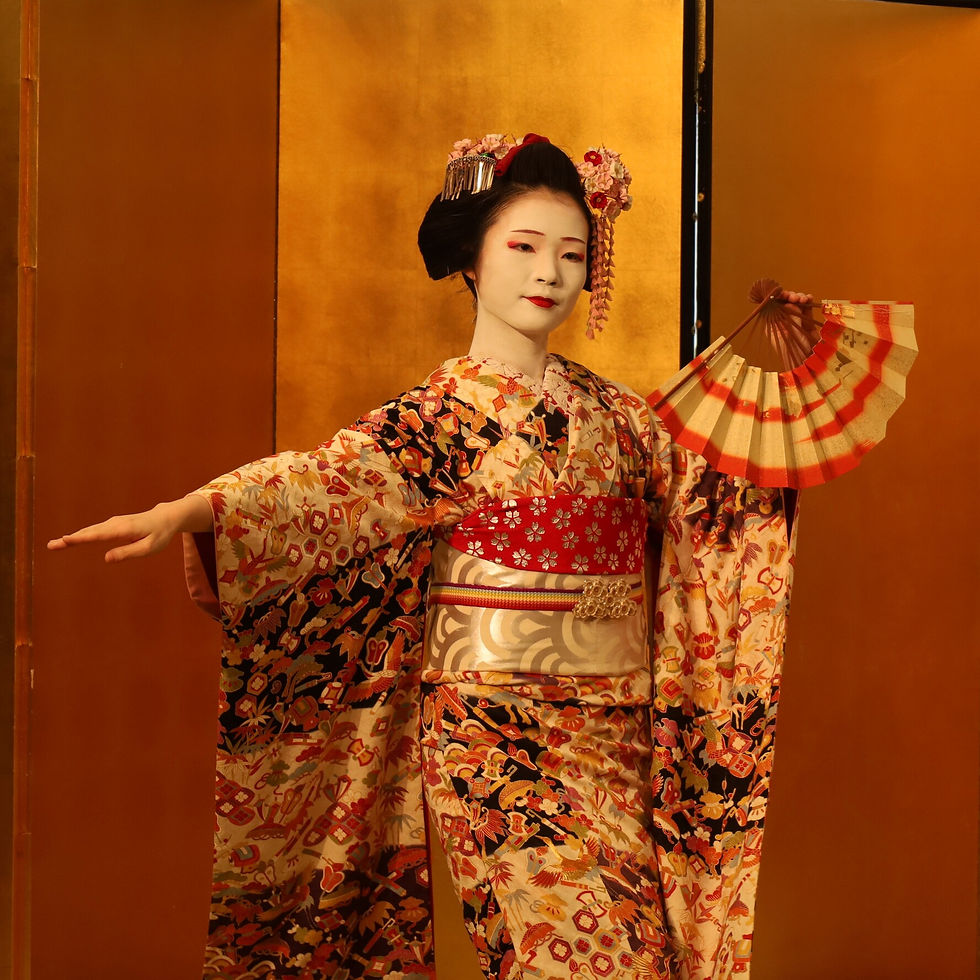"Ozashiki Asobi" Glossary for Kagurazaka Geisha in Tokyo
- Shinya Yamada
- May 10, 2024
- 3 min read
Updated: Sep 24, 2024
In Kagurazaka, you can interact with Geisha in a variety of settings such as ryotei (traditional Japanese restaurants), dining establishments, bars, and Kenban (Geisha practice halls). Familiarizing yourself with the unique terms used in the Karyukai (Geisha districts) can enhance your experience. Therefore, we have compiled a glossary of terms from the Kagurazaka Karyukai. Please use the glossary to deepen your enjoyment of 'Ozashiki Asobi' with the Geisha of Kagurazaka in Tokyo.

"Ozashiki Asobi" Glossary for Kagurazaka Geisha in Tokyo
"Kagurazaka Karyukai (Geisha districts)"
It is said that the Kagurazaka Karyukai started in 1788 at Gyoganji Temple because of its proximity to numerous temples and shrines, eateries, and Geisha houses developed to cater to pilgrims. At its peak, it was one of the most powerful Karyukai in Tokyo, hosting about 600 Geisha and male entertainers (houkan). The Tokyo Kagurazaka Association is comprised of ryotei and Geisha in the Kagurazaka (Shinjuku Ward, Tokyo) area. Currently, it includes 16 Geisha and Hangyoku (apprentice Geisha).
"Ozashiki Asobi"
A general term for playing with Geisha in a tatami room at a ryotei. It is characterized by simple tools and easy-to-understand rules. Losing often results in a penalty drink called "Bappai." This can also be referred to as sitting room play, tea house play, or Geisha play.
"Ozashiki wo Tsukeru" (Setting the Sitting Room)
"Ozashiki wo Tsukeru" refers to the act of a Geisha entertaining guests in a ryotei's sitting room by chatting, serving drinks, performing dances, and playing games with them.
"Ozashiki Games"
Games such as 'Toratora' (Tiger Tiger), 'Konpira Fune Fune' (Konpira Ship), 'Omawarisan' (The Policeman), 'Meiwaku Ken' (Nuisance Fist), 'Tosenkyo' (Fan Tossing) and more.

" Ozashiki Odori" (Ozashiki Dance)
In the sitting rooms of ryotei, Tachikata (dancers) perform dances while Jikata (accompanists) sing and play music. At least one Tachikata and two Jikata (one for singing and one for musical accompaniment) are necessary.
"Sawagi"
A finale song incorporating lyrics unique to each Geisha district.
"Tachikata" (Standing Persons)
Tachikata must showcase an appropriate dance (typically Japanese traditional dance) that fits the ambiance of the Ozashiki or the preferences of the guests. They need to be flexible to accommodate sudden requests, necessitating a broad repertoire.
"Jikata" (Sitting Persons)
Jikata, like Tachikata, requires a diverse repertoire. They must always maintain awareness of the atmosphere ("ma") while performing alongside the dancer. This skill is highly challenging and requires extensive practice.

"Hangyoku" and "Oshaku"
Apprentice Geisha. In the Kanto region, including Tokyo, they are often referred to as "Hangyoku" or "Oshaku", whereas in Kyoto they are called "Maiko".

"Senja-fuda"
A business card given by Geisha to their favorite patrons. The tradition of Senja-fuda is said to have originated from the custom of offering votive slips during pilgrimages to Kannon. In Kyoto, it is said that keeping a Maiko's Senja-fuda in your wallet will attract money (Maiko-mu). Interestingly, a former Maiko is said to attract even more money (Moto Maiko-mu).

"Hanadai" (Flower Fee)
The cost incurred when inviting Geisha to the ozashiki. Also known as "Gyokudai." Typically calculated per two-hour increments. The term "Hangyoku (Half of Gyokudai)" originated from the fact that the cost for a Geisha apprentice was half that of a full Geisha (however, nowadays, the fees are often the same for both).
"Goshugi" (Celebratory Money)
A monetary gift (Tip) given by guests to express appreciation. Equivalent to a tip in foreign contexts. It is handed to Geisha in a decorative envelope (Pochi-bukuro). In Kagurazaka, the Goshugi is placed at the collar of the Kimono. This is a unique scene found only in Kagurazaka. One of the oldest stores in Kagurazaka, "Somaya," sells many Pochi-bukuro for Geisha's "Goshugi."
"Ichigen" (First-time Visitor)
Refers to a first-time visitor to a Ryotei (traditional luxury Japanese restaurant). After the initial visit, if a guest wishes to make another reservation, this action is referred to as "flipping over," which can also be termed as "return reservation." The third booking is called "Najimi." Typically, many high-class Ryotei do not allow "Ichigen-san" (first-time visitors).
"Toode" (Long Trip)
Geisha traveling outside their designated geisha district to restaurants or tea houses.
"Atokuchi" (Second Stage)
Refers to the transition to a subsequent gathering or movement to another establishment for continued entertainment after the initial Ozashiki session. This term typically describes the progression from one social setting to another within the context of geisha entertainment rather than a typical 'afterparty' as understood in Western contexts.
Please check our blog post, How to Learn Tokyo's Geisha Etiquette: Ozashiki Asobi (Entertainment) in Kagurazaka
Book Experience
How to Access Kagurazaka
The Kagurazaka area is conveniently located within 30 minutes from any major station in Tokyo. This is because Kagurazaka is situated in the heart of Tokyo, at the center of the Yamanote Line. Please come and visit this convenient and charming Kagurazaka.




Comments